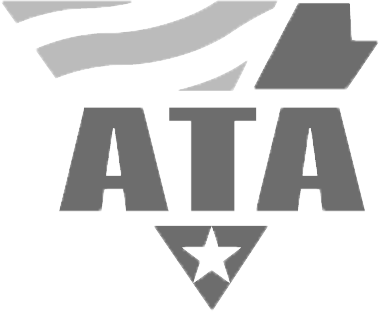Understanding Trucking Emissions and EPA’s Role
The modern world relies heavily on the efficient movement of goods, a task largely undertaken by heavy-duty trucks. These vehicles, while essential for commerce, are significant contributors to air pollution. Their exhaust contains various pollutants, including nitrogen oxides (NOx), particulate matter (PM), hydrocarbons (HC), carbon monoxide (CO), and greenhouse gases (GHGs) like carbon dioxide (CO2) and methane (CH4). These emissions have tangible impacts on both human health and the environment.
Nitrogen oxides, for instance, contribute to the formation of smog and acid rain, leading to respiratory problems and environmental damage. Particulate matter, often visible as soot, can penetrate deep into the lungs and bloodstream, causing cardiovascular and respiratory illnesses. Greenhouse gases trap heat in the atmosphere, contributing to climate change.
Recognizing these impacts, the U.S. Environmental Protection Agency (EPA) was established to protect human health and the environment. Under the authority of the Clean Air Act, the EPA sets national standards for emissions from various sources, including motor vehicles. For heavy-duty trucks, this involves regulating engine and vehicle emissions to reduce the release of harmful pollutants into the atmosphere. The agency’s goal is to drive the development and adoption of cleaner technologies and fuels across the transportation sector.
Over the years, the EPA has introduced increasingly stringent regulations aimed at curbing emissions from heavy-duty vehicles. These regulations dictate limits on the amount of pollutants a truck engine or vehicle can emit per mile or per ton-mile of freight moved. Compliance with these standards often requires manufacturers to implement advanced emission control technologies and for fleets to adopt newer, cleaner vehicles. The ongoing process of updating and enforcing these rules is a complex interplay between environmental science, technological feasibility, economic considerations, and political will.
Recently, discussions and actions suggest that the EPA reconsiders trucking emission regulations impact, potentially leading to adjustments or reviews of existing or proposed rules. This reconsideration is a significant development for the trucking industry, policymakers, environmental advocates, and the public alike.
The regulatory landscape for heavy-duty trucking is dynamic, constantly evolving in response to new scientific data, technological advancements, and shifts in policy priorities. The EPA’s role is central to this, acting as the primary federal body responsible for setting the environmental performance targets that the industry must meet. Understanding the nature of trucking emissions and the EPA’s historical and ongoing involvement is crucial for appreciating the significance of any potential reconsideration of these regulations.
Current EPA Regulations Governing Heavy-Duty Vehicles
The EPA has implemented a series of regulations targeting emissions from heavy-duty engines and vehicles, often categorized into different tiers or phases. These regulations have progressively tightened emission limits over time, pushing manufacturers to innovate and adopt cleaner technologies. The cornerstone of these rules has been reducing criteria pollutants like NOx and PM, but recent efforts have also focused heavily on greenhouse gas emissions.
Historically, regulations like the 2007 and 2010 standards significantly reduced limits for NOx and PM, leading to the widespread adoption of technologies such as Diesel Particulate Filters (DPFs) and Selective Catalytic Reduction (SCR) systems on diesel trucks. DPFs physically trap soot particles, preventing them from being released into the air, while SCR systems use a reductant (typically Diesel Exhaust Fluid, or DEF) to convert NOx into harmless nitrogen and water.
Following these, the EPA, in conjunction with the National Highway Traffic Safety Administration (NHTSA), introduced the Greenhouse Gas Emissions Standards for Medium- and Heavy-Duty Engines and Vehicles program, often referred to as GHG Phase 1 (effective for model years 2014-2018) and GHG Phase 2 (effective for model years 2021-2027). These phases aimed to improve fuel efficiency and reduce CO2 emissions from trucks and buses. Phase 2 standards were particularly ambitious, introducing more stringent requirements for engine performance, aerodynamic improvements, tire efficiency, and vehicle weight reductions.
GHG Phase 2 standards were designed to be implemented incrementally, with increasingly strict requirements for later model years. The goal was to encourage the adoption of readily available fuel-saving technologies and pave the way for the development and deployment of advanced efficiency technologies and alternative fuel vehicles.
Beyond greenhouse gases, the EPA has also continued to address criteria pollutants. A notable recent development is the finalized rule often referred to as the Clean Trucks Initiative or NOx Standard rule (effective starting in 2027). This rule significantly tightens NOx emission standards for heavy-duty engines, aiming for reductions up to 80% below current limits by 2027. It also introduced longer warranty periods for emission control systems and updated testing procedures to better reflect real-world driving conditions.
These regulations represent a complex web of requirements that manufacturers must meet when designing and building new trucks and engines. For trucking fleets, they dictate the type of equipment they must purchase to remain compliant, influencing purchasing cycles, operational strategies, and long-term investment plans. The stringency and implementation timeline of these rules are precisely what come into question when the EPA reconsiders trucking emission regulations impact.
Compliance is not just a matter for manufacturers; it impacts maintenance, fuel purchasing, and even driver training for fleets. For example, operating vehicles with SCR systems requires managing DEF levels, and DPFs require periodic regeneration. The increased complexity of modern emission control systems can also lead to higher maintenance costs compared to older vehicles. The current regulatory environment, therefore, imposes significant technological and financial considerations on every entity involved in heavy-duty trucking.
Exploring Why the EPA Reconsiders Trucking Emission Regulations Impact
When the EPA signals a potential reconsideration of existing or recently finalized regulations, it’s typically driven by a confluence of factors. This isn’t a sudden decision but rather a response to ongoing dialogues, evolving circumstances, and sometimes, political shifts. Several key elements contribute to why the EPA reconsiders trucking emission regulations impact.
One primary driver is feedback from the affected industry. Truck manufacturers and trucking associations often raise concerns about the technical feasibility and economic impact of stringent new standards, especially on aggressive timelines. They may argue that the technology required to meet the limits is not yet sufficiently mature, reliable, or affordable for mass production and widespread adoption. Imposing standards that outpace technological readiness can lead to higher costs for consumers (in this case, trucking companies), potential reliability issues with complex new systems, and disruptions to manufacturing processes.
Economic considerations play a crucial role. Implementing new emission control technologies and adopting cleaner vehicles, particularly zero-emission options like battery-electric or fuel cell trucks, involves substantial capital investment. For trucking companies, especially small and medium-sized enterprises (SMEs), the cost of replacing or upgrading large portions of their fleet can be prohibitive, potentially impacting their financial viability. Industry groups often lobby the EPA and Congress, arguing that overly strict regulations can hinder economic growth, increase transportation costs, and potentially lead to job losses if businesses cannot afford to comply.
The practical challenges of deploying new technology are another factor. For electric trucks, this includes the need for a vast, reliable, and accessible charging infrastructure. For hydrogen fuel cell trucks, it requires hydrogen production, distribution, and refueling infrastructure, which are currently in nascent stages. The pace of infrastructure development is often slower than regulatory timelines, creating a bottleneck for technology adoption. Manufacturers and fleets may highlight these infrastructure gaps as reasons why stringent emission targets are challenging to meet within the specified timeframe.
Political and administrative changes also significantly influence regulatory priorities. A change in presidential administrations can bring different perspectives on environmental policy, the role of regulation in the economy, and the balance between environmental protection and industrial competitiveness. A new administration might initiate reviews of regulations promulgated by the previous one, seeking to align them with new policy goals, which could involve reconsidering the pace or stringency of environmental rules.
Furthermore, new scientific information or updated economic modeling can sometimes lead the EPA to revisit its previous assumptions about the costs, benefits, or feasibility of regulations. For example, new data on the real-world effectiveness of emission control systems, the actual costs of new technologies, or the projected adoption rates of alternative fuels could trigger a review.
Finally, legal challenges can compel the EPA to reconsider rules. Environmental regulations are frequently challenged in court by industry groups or states. If a court remands a rule back to the agency for further consideration, the EPA must undertake a review process, which can lead to adjustments or reaffirmation of the original rule.
All these factors contribute to a complex environment where the EPA must balance its mandate to protect public health and the environment with the need for regulations to be technologically achievable, economically feasible, and broadly accepted by the affected stakeholders. The decision process when the EPA reconsiders trucking emission regulations impact involves extensive data analysis, public comment periods, and often, protracted negotiations between various interested parties.
Anticipating the Impact on Trucking Fleets and Operations
Any modification or reconsideration of EPA trucking emission regulations will have significant and varied impacts on trucking fleets, regardless of their size or operational focus. For asset-based carriers like Apex Transit, which operate their own fleet of trucks, these regulations directly influence their most substantial capital expenditures and ongoing operational costs.
If the EPA decides to delay or lessen the stringency of future emission standards, such as the tight NOx limits set for 2027, it could provide immediate relief to fleets facing pressure to invest in expensive new equipment. A slower pace of regulatory change might allow carriers to extend the lifespan of their current trucks or invest in less costly, less technologically complex new diesel vehicles that meet slightly less stringent standards. This could free up capital for other investments, such as technology upgrades for efficiency or expansion of services.
Conversely, a delay could also slow the adoption of cleaner, potentially more fuel-efficient technologies. While the upfront cost of advanced emission systems or alternative fuel vehicles is high, newer trucks are often more fuel-efficient and may have lower long-term maintenance costs associated with the powertrain itself (though emission controls add complexity). Fleets committed to sustainability goals, like Apex Transit’s target of hauling 30% of loads on biofuels by the end of 2025, might find less regulatory pressure to accelerate their transition to zero or low-emission vehicles if standards are weakened or delayed.
Operational impacts are also considerable. Newer trucks with advanced emission control systems, while cleaner, can sometimes be more complex to maintain. Mechanics require specialized training, and parts for these systems can be expensive. Changes in regulations can affect maintenance protocols and the availability and cost of aftermarket parts. Furthermore, operating vehicles that require DEF or have specific regeneration cycles for DPFs adds complexity to daily operations and driver responsibilities.
A shifting regulatory landscape can create uncertainty, making long-term fleet planning challenging. Trucking companies typically plan their equipment purchases years in advance, considering depreciation schedules, financing options, and anticipated regulatory requirements. When the EPA reconsiders trucking emission regulations impact, it introduces unpredictability into this crucial process. Should they invest heavily in equipment designed to meet current stringent standards, risking that those standards might be relaxed? Or should they hold back, potentially missing out on the benefits of newer technology or facing a rush to comply if strict rules are eventually upheld?
The availability and price of compliant vehicles are also directly tied to regulations. Manufacturers invest heavily in developing engines and vehicles that meet EPA standards. Changes in standards can affect their production timelines and pricing structures. If standards are relaxed, manufacturers might slow investment in the most advanced technologies, potentially impacting the future availability and cost of zero or near-zero emission trucks.
For smaller carriers, who often purchase used equipment, regulatory uncertainty can be particularly difficult. The resale value and operational viability of older trucks are heavily influenced by upcoming emission standards. If stricter standards are delayed, older, less compliant trucks might remain economically viable for longer, affecting the used truck market.
Ultimately, the impact on fleets hinges on the specifics of any regulatory changes. A balanced approach that considers economic feasibility alongside environmental goals is often favored by the industry. Companies that have already begun investing in newer, cleaner technologies, like Apex Transit with its modern Volvo fleet, may be better positioned to adapt, but the overall market dynamics will still be influenced by the regulatory direction the EPA decides to take.
The ongoing debate around regulations underscores the need for clear, long-term policy signals to allow the industry to plan and invest effectively. Without such clarity, fleets face increased risk and difficulty in navigating the transition to cleaner transportation.
Potential Environmental Outcomes of Regulatory Changes
The core purpose of EPA emission regulations is environmental protection. Therefore, any reconsideration or alteration of these rules carries significant implications for air quality and climate change. The potential environmental outcomes depend directly on whether the EPA decides to weaken, strengthen, delay, or uphold the existing standards.
If the EPA were to roll back or significantly delay the implementation of stringent emission standards, particularly the recent NOx rule or future phases of GHG standards, the most immediate consequence would likely be a slower rate of reduction in harmful air pollutants from heavy-duty trucks. Nitrogen oxides (NOx) and particulate matter (PM), key targets of current regulations, have documented negative impacts on respiratory health and contribute to the formation of smog and acid rain. Less stringent standards would mean newer trucks might not be required to achieve the same level of emissions reductions, potentially leading to higher cumulative emissions over time compared to a scenario where the strict rules are fully implemented on schedule.
Regarding greenhouse gas emissions, which contribute to climate change, delaying or weakening GHG Phase 2 or subsequent standards would slow down the expected improvements in fuel efficiency and the transition towards zero-emission vehicles in the heavy-duty sector. While fuel efficiency is driven by economics as well as regulation, the regulatory push provides a strong incentive for manufacturers to invest in and deploy technologies that reduce CO2 emissions per mile. A reduced regulatory burden could lessen this urgency, potentially leading to higher overall CO2 emissions from the trucking fleet in the coming years than projected under the current rules.
The transition to alternative fuels and powertrains, such as electric and hydrogen trucks, is closely linked to the stringency of emission regulations. Stricter regulations create a stronger business case for investing in and deploying these technologies, as they offer compliance pathways that traditional diesel engines may struggle to achieve in the future. If regulations are relaxed, the economic incentive to switch to zero-emission vehicles diminishes, potentially delaying the scaling up of these cleaner alternatives and the necessary infrastructure development.
Consider the implications for specific pollutants:
- Nitrogen Oxides (NOx): Crucial for reducing ground-level ozone and improving air quality in urban areas. Weakening NOx standards could exacerbate air pollution issues in communities located near major trucking routes and freight hubs.
- Particulate Matter (PM): Fine PM is linked to serious health problems. While significant progress has been made in reducing PM, less stringent rules could slow further reductions, impacting public health.
- Greenhouse Gases (GHGs): Primarily CO2, these emissions contribute to global warming. Delays in GHG reductions from trucking make it harder for the U.S. to meet its climate commitments.
On the other hand, proponents of reconsideration might argue that a more gradual implementation allows for technology to mature, potentially leading to more reliable and ultimately more effective emission control systems. They might also suggest that economic vitality is necessary to fund environmental investments. However, from a purely environmental perspective, delaying emission reductions means accumulating more pollution in the interim, with associated costs to public health and the environment.
The environmental outcome is not solely determined by federal regulations; state-level initiatives, like California’s Advanced Clean Trucks (ACT) rule requiring a certain percentage of zero-emission truck sales, also play a critical role. However, EPA standards set the baseline for the entire country, making any changes at the federal level broadly influential. The decision when the EPA reconsiders trucking emission regulations impact will therefore be a significant factor in determining the trajectory of environmental performance for the U.S. trucking fleet in the years to come.
Industry Reactions and the Political Climate
The trucking industry and its stakeholders represent a diverse group with varying perspectives on environmental regulations. Their reactions to the possibility that the EPA reconsiders trucking emission regulations impact are multifaceted and often reflect their specific economic interests and operational realities.
Major trucking associations, such as the American Trucking Associations (ATA), often voice concerns about the feasibility and cost-effectiveness of stringent emission standards. They advocate for regulations that are technologically achievable within reasonable timelines and that do not place an undue financial burden on carriers. Their arguments often center on the high cost of new trucks, the availability and reliability of advanced emission control systems, and the challenges associated with adopting and maintaining alternative fuel vehicles and their required infrastructure. They may push for longer compliance timelines, more flexibility in meeting standards, or financial incentives to help fleets transition to cleaner technologies.
Truck manufacturers face the complex challenge of developing and producing vehicles that meet current and anticipated regulations while remaining competitive in the market. They invest billions in research and development for advanced diesel engines, emission control systems, and alternative powertrain technologies (electric, hydrogen, natural gas). Manufacturers often express the need for regulatory certainty to guide their investment decisions and production planning. While they are committed to developing cleaner vehicles, they may share industry concerns about aggressive timelines or mandates that outpace the development of necessary infrastructure.
Environmental advocacy groups, conversely, typically urge the EPA to strengthen and accelerate the implementation of emission regulations. They highlight the public health benefits of reducing pollutants and the necessity of decarbonizing the transportation sector to address climate change. These groups often push for stricter standards, faster timelines, and mandates for zero-emission vehicle adoption, arguing that the long-term costs of inaction on environmental issues far outweigh the costs of regulatory compliance.
The political climate plays a significant role in this debate. Environmental regulations can become highly politicized, with different political parties holding divergent views on the balance between environmental protection and economic activity. A change in the administration can lead to a shift in regulatory priorities and enforcement approaches. The current political environment, with ongoing discussions about deregulation in various sectors, contributes to the possibility that the EPA reconsiders trucking emission regulations impact. For example, the recent congressional action overturning a rule related to tire manufacturing emissions, while distinct from engine standards, illustrates a broader political appetite for reviewing and potentially rolling back regulations perceived as burdensome.
State governments also play a role, sometimes implementing their own, often more stringent, emission standards (like California’s waiver authority under the Clean Air Act). The interplay between federal and state regulations adds another layer of complexity to the regulatory landscape and influences how manufacturers and fleets operate across different jurisdictions.
The industry’s reaction is not monolithic. While many express concerns about cost, there are also carriers, like Apex Transit with its sustainability goals, who are proactively investing in cleaner technologies and practices. These companies may view clear, consistent environmental regulations as necessary to level the playing field and drive industry-wide progress towards sustainability. They may also see opportunities in offering green transportation services to environmentally conscious shippers.
The debate surrounding emission regulations is a microcosm of the broader societal challenge of balancing economic imperatives with environmental responsibilities. The outcomes of the EPA’s reconsideration process will be heavily influenced by the effectiveness of advocacy efforts from these different stakeholders and the prevailing political dynamics.
The Road Ahead for Trucking Emission Standards
The potential that the EPA reconsiders trucking emission regulations impact introduces a degree of uncertainty into the future of the industry’s environmental compliance journey. While the specific outcomes remain to be seen, several pathways and considerations are likely to shape the road ahead for trucking emission standards.
One possible outcome of a reconsideration is a delay in the implementation of certain standards, particularly the more stringent requirements set for future years. This could provide manufacturers with more time to perfect emission control technologies and develop alternative fuel vehicles, and it could give fleets additional time to plan and finance the transition to newer equipment. However, as discussed, delays also mean slower environmental progress.
Another possibility is an adjustment in the stringency of the standards themselves. This could involve revising emission limits, altering testing procedures to better reflect real-world conditions, or modifying the structure of compliance requirements. Any changes would likely be based on updated technical assessments, economic analyses, and input from stakeholders regarding feasibility and cost.
The focus of future regulations may also evolve. While NOx and PM remain important, increasing attention is being placed on greenhouse gas emissions and the transition to zero-emission vehicles (ZEVs). Future regulations might emphasize the deployment of electric and hydrogen fuel cell trucks, potentially through sales mandates or incentives, alongside continued efforts to improve the efficiency and reduce emissions from conventional internal combustion engines running on diesel or alternative fuels like renewable diesel or biofuels. Apex Transit’s proactive step towards using biofuels aligns with this broader trend of exploring diverse cleaner energy sources.
Technological innovation will continue to be a critical factor. The pace of development in battery technology, hydrogen fuel cells, engine efficiency, and emission control systems directly influences what is technically and economically feasible from a regulatory standpoint. Continued investment in R&D, both by manufacturers and through government support, will be essential to achieving ambitious environmental goals.
Infrastructure development is another non-negotiable piece of the puzzle, particularly for ZEV adoption. Regulatory bodies, utilities, and the private sector must work collaboratively to build out the necessary charging and refueling infrastructure at truck depots, along major freight corridors, and at logistics hubs. Without adequate infrastructure, even the most advanced ZEV technology cannot be widely deployed.
The political and legal landscape will continue to shape the trajectory of emission standards. Future court decisions, changes in congressional priorities, and shifts in administration policy could all influence the EPA’s approach and the stability of the regulatory framework. The ongoing fight for better trucking legislation, as referenced in external discussions, underscores the dynamic nature of the policy environment surrounding the industry.
For trucking fleets navigating this complex future, staying informed about regulatory developments is paramount. Making strategic decisions about fleet modernization, investing in driver training for new technologies, and exploring options for cleaner fuels and vehicles will be crucial for long-term sustainability and competitiveness. Companies that proactively invest in modern, well-maintained equipment, like Apex Transit’s Volvo fleet, are often better positioned to adapt to evolving standards.
The path forward involves balancing environmental aspirations with economic realities. The EPA’s reconsideration of trucking emission regulations impact highlights the ongoing tension in this balance. A clear, predictable regulatory path, supported by realistic timelines, technological advancements, and necessary infrastructure investment, will be essential for the trucking industry to continue serving the economy efficiently while also contributing to a cleaner environment.
The collaboration between regulatory bodies, manufacturers, carriers, fuel providers, and technology developers will be key to successfully navigating the challenges and opportunities presented by the push for cleaner transportation. Ultimately, the goal remains a future where goods are moved efficiently and reliably with minimal impact on air quality and climate.
Have questions? Contact us here.














